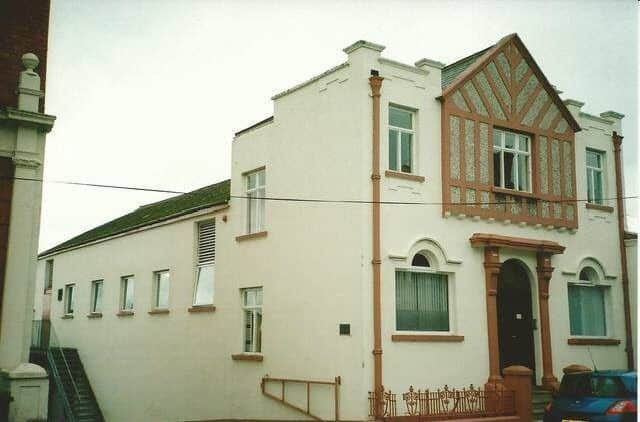There's more history than you can imagine on heritage walking tour


He’d be useful today!
The ubiquitously honoured First Baronet Hart GCMG was born on 20 February 1835 in Woodhouse Street, now Dungannon Street.
He’s one of the many historic people along with buildings, artefacts and significant locations included in the recently launched Portadown Heritage Tours.
Advertisement
Hide AdAdvertisement
Hide AdThe guided walks trace the old quays on the Newry Canal; pass one of Ulster’s last-remaining intact WWII air-raid shelters and pause at the former home of the ‘Catch-my-pal’ temperance movement which existed in the early 1900s.
Portadown’s Sir Robert Hart Memorial Primary School is named after the Inspector-General of China’s Imperial Maritime Customs Service from 1863 to 1911.
Sir Robert Hart transformed and modernised the hopelessly inefficient Chinese customs organisation into a well-regulated, highly competent establishment that contributed enormously to China’s economy.
“You won’t believe the history” the Heritage Tours website announces, thoroughly confirmed for Roamer by one of the project co-ordinators, John Proctor.
Advertisement
Hide AdAdvertisement
Hide Ad“I’m a through-and-through Portadown-man,” retired financial accountant Proctor enthused, before embarking on the extensive list of historical stop-offs that liberally punctuate the route-map through over 400 years of culture and heritage.
“The Hart family owned a public house in the town,” he added, before mentioning Edward Saunderson’s statue.
It has been repositioned but Unionist leader Edward Carson made a speech beside the statue at one of the final pre-Covenant demonstrations on 25 September 1912 and paid a historic tribute to Saunderson - “though dead, yet speaketh”.
In a powerful speech against the Home Rule Bill, North Armagh MP Edward Saunderson had said in the House of Commons “Home Rule may pass this House but it will never pass the bridge at Portadown”.
Advertisement
Hide AdAdvertisement
Hide AdJohn outlined “the substantial industrial history” that’s part of the exhibition and walking tours, focussing on the “six or seven linen mills in the area.”
Portadown has a long-standing link with the U.S.A, notably the city of Manchester in Connecticut.
The reason for this link was that the great Cheney Mills in Manchester periodically sent recruitment teams to Portadown, to offer employment to linen workers in the town’s factories.
Mr Proctor spoke proudly of Ulster Carpets and “the old Acheson linen factory.Schools, church halls, churches and the railway station are all a part of the town’s rich past, and more poignantly “there’s the Bann Bridge memorial stone to the 1641 rebellion.”
Advertisement
Hide AdAdvertisement
Hide AdThe massacre at the bridge was, according to a chronicler of the time, “responsible for the deaths of upwards of 200 Protestants.”
Grant-aided by the Heritage Lottery Fund, the tours are run by the Carleton Street Community Development Association.
Along with a special exhibition in Carleton Street Orange Hall and a wide-ranging website, the project is the culmination of over a year’s training by local volunteers, mostly members of the Orange Order.
The guided walks through Portadown’s central area reveal the town’s history and heritage through its buildings, memorials and statues, many with an Orange connection. But the old Convent School is on the tour, and Saint Patrick’s Chapel, the former fire station and the old Portadown News newspaper office!
Advertisement
Hide AdAdvertisement
Hide AdThe Bann bridge air-raid shelter was discovered in 2005 during the widening and strengthening of the bridge over the river.
It’s thought to be one of the last remaining intact Second World War air raid shelters in Northern Ireland.
The unearthing of the structure coincided with the 60th anniversary of victory in Europe day (VE) on May 8, 2005.
It was covered over to preserve it for posterity, but a plaque marks the place.
Advertisement
Hide AdAdvertisement
Hide AdPortadown has two buildings formerly used in connection with the once flourishing temperance movement.
One was the Temperance Hall, mainly used by the Rechabite movement (a ‘friendly society’) which recruited children and young people.
The other building, now part of Sprotts Ltd in Edward Street, was the home of the ‘Catch-my-Pal’ movement, which existed in the early 1900’s.
The Catch-my-Pal organisation was formed a few years before WWI by the Armagh Road Presbyterian minister, Rev. Robert J Patterson, later to be known as ‘Catch-my-Pal’ Patterson, founder of the Protestant Total Abstinence Union.
Advertisement
Hide AdAdvertisement
Hide AdThe organisation spread like wildfire throughout County Armagh and further afield, and Portadown was one of the liveliest ‘units’ in the province. By 1910 it had 1,127 members.
The building closed in the 1930s to become the Savoy Cinema, but the link with the past persisted and the cinema was referred to by filmgoers as ‘The Catch’.
The name remained after its closure in the late 1950s.
In vivid contrast to The Catch, McConvilles Traditional Pub has been on the corner of Mandeville Street since the 1800’s, when it was also a hotel.
Inside are the original wooden snugs, moulded ceilings and etched Russian-oak fixtures.
Advertisement
Hide AdAdvertisement
Hide Ad“There’s a tradition that some of the carvings are the same designs that were on The Titanic,” Mr Proctor told me with some uncertainty in his voice! McConvilles today is a thriving bar complex and nightclub.
There’s much, much more on the tour for this page today but Roamer will return!
The exhibition in Carleton Street Orange Hall runs until September 2 and full tour booking details, and lots of history, are on www.portadownheritagetours.co.uk